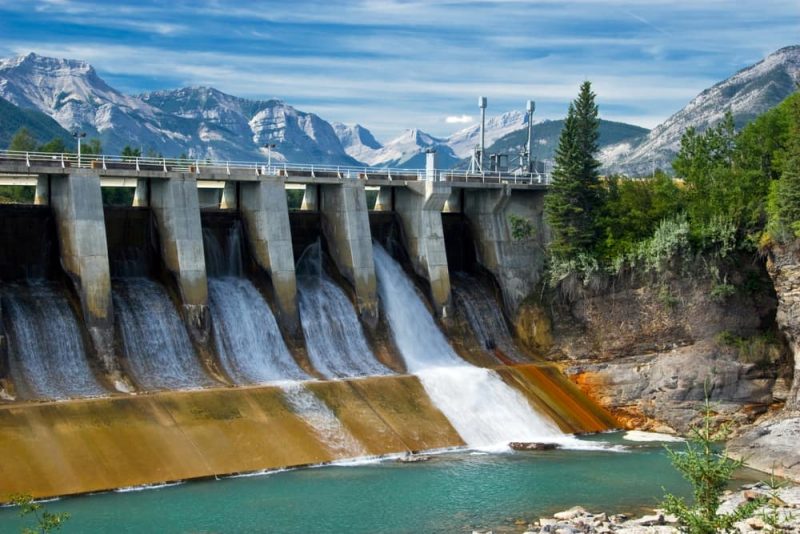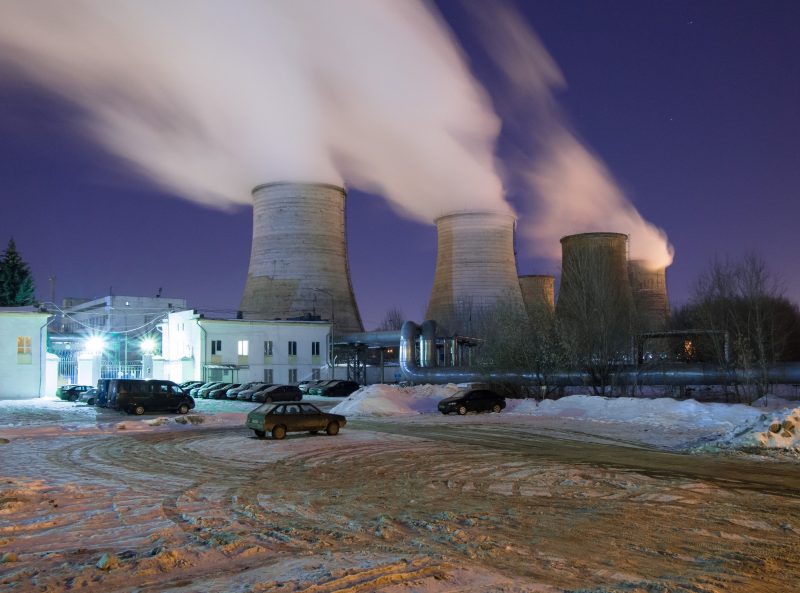The natural energies They are those that are available in nature without the intervention of man. They are also called primary energy. These resources do not undergo any chemical or physical modification for their energy use. For example: kinetic energy of water currents, light energy of the sun.
The artificial energies They are the energy products obtained through a process of chemical or physical transformation. They are also called secondary because they are obtained as a secondary product of a natural energy source. For example: chemical energy, atomic energy.

Both natural and artificial energies can be classified into:
- Renewable. They are those that do not run out or that can be manufactured more quickly than they are consumed.
- Non-renewable. They are those that cannot be manufactured or that their manufacture is significantly slower than their consumption.
Examples of natural or primary energy

- Kinetic energy of water currents (renewable). The movement of water has kinetic energy. While that energy can be used to become secondary energy, as in a hydroelectric power station, it can also be used as primary energy. For example:
- Maderada. A way of transporting logs of wood by dropping them into rivers, and letting them float from where they are cut to a downstream storage point.
- Boats. Even if they use a motor or rowing propulsion, boats can take advantage of the kinetic energy of water currents, both marine and river.
- Watermills. The kinetic energy of the water is converted into mechanical energy that moves the blades of the mill wheels that turn “grinding wheels” (rounded stones) that turn the grain into flour.
- The heat energy of the sun (renewable). The sun offers us heat without any intervention of man. We take advantage of this energy daily by placing ourselves under the sun when we are cold. It can also be used with the construction of greenhouses, concentrating that heat and favoring the growth of plants that need high temperatures and humidity.
- Light energy from the sun (renewable). It is the energy that we use in crops, since plants convert it into chemical energy through photosynthesis. In addition, we use it to illuminate our homes through windows and glass ceilings.
- Electromagnetic solar radiation (renewable). It is the sum of the light and heat energy of the sun. It is a type of natural energy that can be transformed into electrical energy (artificial) through photovoltaic cells, heliostats or thermal collectors.
- Kinetic energy of wind (renewable). Air currents (wind) have kinetic energy that is converted into mechanical energy by moving the blades of devices that we usually know as mills. In wind turbines, this energy is converted into electrical energy (artificial). But it can also be used as mechanical energy:
- Pump mills. Mechanical movement is used to pump groundwater to the surface. They are used for the irrigation of plantations, mainly in places where there is no access to electrical networks.
- Windmills. In the same way as water mills, mechanical energy is used to convert grains into flour.
- Human and animal energy. The physical strength of humans and animals is used directly:
- Plow. Still in some parts of the world the plow is still used “with blood”, that is, it is drawn by an animal.
- Coffee grinder. Currently, coffee is usually ground with electric grinders. However, manual appliances can still be used.
- Natural electrical energy (renewable). Although energy from water, wind, and the sun can be used to convert it into electricity, it is also found in nature in thunderstorms. Currently there is an architectural project called Hydra that aims to harness the energy of lightning.
- Biomass. It is a type of energy that is only renewable in some cases. Using wood (chemical energy) to convert it into heat energy (in bonfires) is not sustainable in the long term, due to the rapid decline of forests globally. However, other energetic forms of biomass, such as sunflower crops to be converted into biodiesel, are indeed a renewable and sustainable form of natural energy.
- Hydrocarbons (not renewable). Natural gas and oil are natural chemical energies. The gas is used as heat energy, without making any changes. It is also converted into electricity (artificial energy). Petroleum is a natural source but it is used in its artificial forms, such as gasoline or diesel.
Examples of artificial or secondary energy

- Electricity. Electricity can be obtained from several primary sources:
- Hydroelectric power (renewable)
- Solar energy (renewable)
- Chemical energy (not renewable). Petroleum derivatives that are burned in an engine or turbine are used. One of the disadvantages of this method, in addition to not being renewable, is that it emits toxic gases into the atmosphere.
- Atomic Energy. Natural nuclear energy is used.
- Kinetic energy. Some types of flashlights are charged through a dynamo that can be operated manually.
- Gasoline. They are the derivatives of petroleum (natural energy) that have been chemically modified to allow their direct use.
